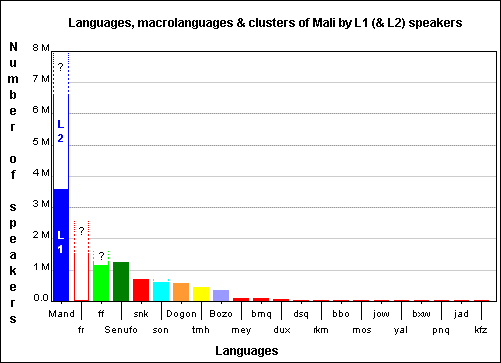In order to facilitate networking and resource sharing on ebola messaging in (West) African languages, a new online initiative is in the works, consisting of an email list, with a web-based platform for collaboration coming. Watch this space for more information.
The web-based platform is now up. It uses the BlackBoard system, and is hosted by the University of Alaska - Anchorage (UAA). This and the email list are intended to work in tandem.
I have the privilege of collaborating on this with Dr. Catherine Knott (UAA, Anthropology), who was a volunteer in Peace Corps/Mali at about the same time I was, and her colleagues at UAA.
The aims of Translating Hope (Health Education in African Languages) are described in the following (this list is posted on the BlackBoard site, and may be updated and changed there):
Understanding the importance of language in communication and learning, the necessity of good public education and health training for ebola in areas of West Africa affected by the ebola crisis, and the multilingual characteristics of societies in West Africa, this informal working group is established to facilitate communication across and about needs and initiatives for effective communication and learning in the languages of the region.
This includes, among other purposes:
Addendum (3 Nov. 2014)
The web-based platform is now up. It uses the BlackBoard system, and is hosted by the University of Alaska - Anchorage (UAA). This and the email list are intended to work in tandem.
I have the privilege of collaborating on this with Dr. Catherine Knott (UAA, Anthropology), who was a volunteer in Peace Corps/Mali at about the same time I was, and her colleagues at UAA.
Goals
The aims of Translating Hope (Health Education in African Languages) are described in the following (this list is posted on the BlackBoard site, and may be updated and changed there):
Understanding the importance of language in communication and learning, the necessity of good public education and health training for ebola in areas of West Africa affected by the ebola crisis, and the multilingual characteristics of societies in West Africa, this informal working group is established to facilitate communication across and about needs and initiatives for effective communication and learning in the languages of the region.
This includes, among other purposes:
- networking across diverse organizations working on ebola and those able to provide assistance with African languages (specifically translation and composition)
- facilitating access to existing information in African languages
- facilitating use of African languages in messaging by organizations, especially international donors, technical agencies, and NGOs (including via composition and via translation)
- facilitating review, storage, and reuse of materials on ebola in African languages, including standardized language names and use of approved orthographies
- facilitating work with cross-border languages with goals of harmonizing messages and standardizing terminologies
- considering best practices for use of technology to deliver content in African languages, from radio to mobile, and including links between technologies
- applying best practices for culturally sensitive and community approved approaches to messaging in African languages
This group also:
- recognizes the importance of the official and international languages of the region - English, French, and Portuguese - even as it focuses mainly on African languages
- respects the prerogatives of African nations, organizations, communities, and individuals concerning the use of their languages
- respects the role of the African Union's African Academy of Languages (ACALAN) in working on cross-border vehicular languages of the region
Participating
If you can contribute to this effort, and/or if your work involves messaging on ebola in West Africa, you may join by subscribing to the Translating Hope email list. Subscribers can then be given access to the BlackBoard site.










